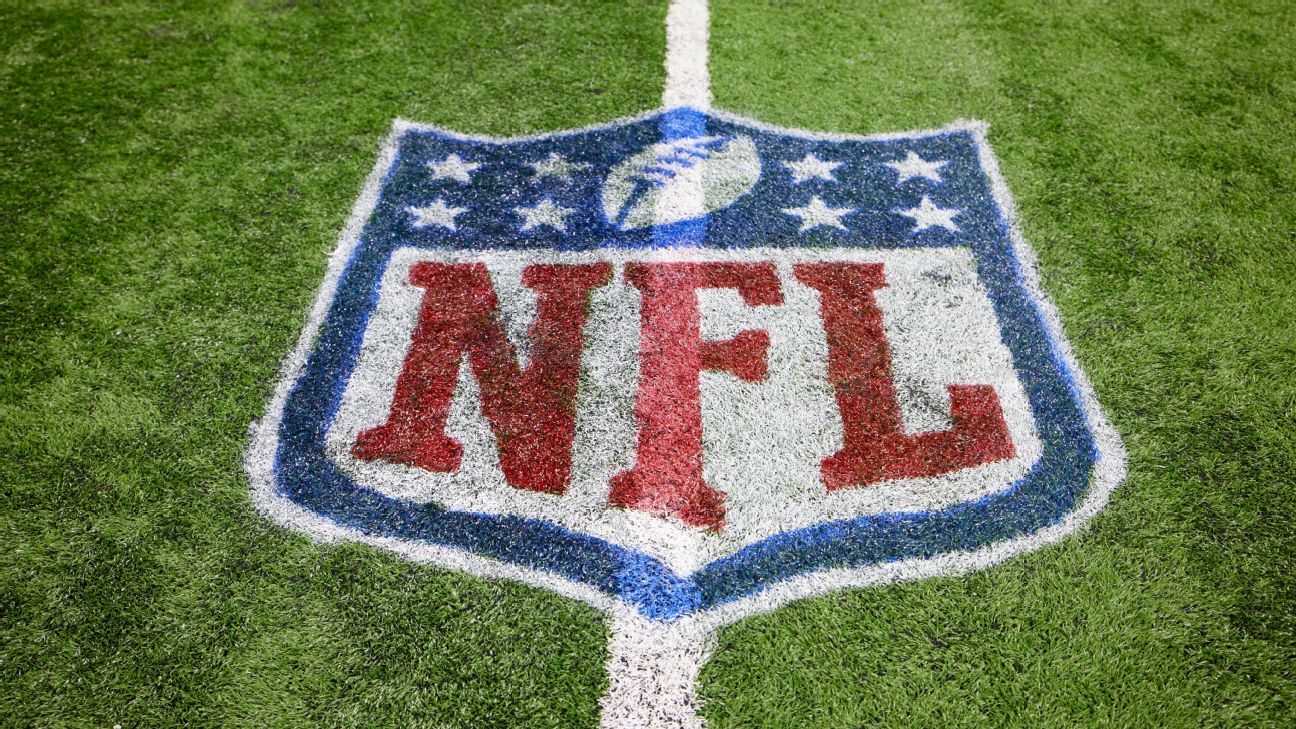NFL owners have approved a proposed rule to ban the hip-drop spin tackle, the league announced Monday.
The violation carries a 15-yard penalty if it's called during games, but Troy Vincent, the NFL's executive vice president of football operations, pointedly pointed out last week that it could be used in the same manner as the “helmet use” that usually leads to it. Warning letters and fines in the week after the game, rather than flags during the game.
The proposed ban on the hip-drop spin tackle was written to address only a subset of the rugby-style tackling that has spread across the NFL in recent years, competition committee chairman Rich McKay said last week.
The tackling technique often leads to less physical injuries. According to the rule, officials must watch for two actions: if a defender “grabs the runner with both hands or grabs him with both hands” and “bends his hips and/or lower body, lowers, lands and catches the runner's weight. The runner, leg(s) at the knee or below.”
On Monday, McKay clarified that Monday's rule change would not eliminate the hip-trap tackle, only a “spinning technique that is not often used.”
“When it's used, the running back does an incredible amount of damage; running back is completely unsafe. I've heard defenders say, I've heard them say, 'Hey, you're putting me in a really tough situation. You say I can. Not hitting here, what? I What to do? My answer, as always, was, 'Well, you can't do that.' “That's because the guy you're hitting is defenseless and has no way to protect himself,” McKay said, according to NFL.com.
“So, we've got to protect it. You've got to come up with other ways, yeah, you know what they're doing. Yeah, we're banning the hip drop, but what you're thinking is pulling from behind, that's where it falls. … It's still a tackle. “It's that tackle where the player goes up in the air and then lands on his feet.”
NFL executive vice president Jeff Miller said there were 230 tackles during a game last season, and 15 players missed time for the season as a result.
During a news conference, the league played video to show six specific plays where the hip-drop tackle was used in games, taken by tight end Drew Sample, running back Tony Pollard, receiver Tyler Boyd, quarterback Geno Smith and quarterback Ryan Tannehill. Now illegal conquest.
NFL teams regularly receive videos showing illegal hits and ways to get around them within the rules.
“It's a new rule, so you may not have seen it,” McKay said of the penalty for the mistake. “It's never in practice; nobody does it in practice. A player is going to use this tactic in practice on a player on his own team, so you never see it. You only see it in the game. . We'll tell you: 'Listen, this is one for the books. Penalty. You can call it. You've got to see three elements of what's going on here. You've got to see him grab it. You've got to see him control it. You've got to see it spin in the air, see it without weight, and if you don't see it, don't charge.
“We're taking all these tapes you've seen… we're going to take them to the club and show them: we don't want this. “
The NFL Players Association (NFLPA) last week joined a number of current and former players in opposing the proposal. In a statement posted on social media, the NFLPA said the rule would cause confusion among players, coaches, officials and fans.
On Monday, former player JJ Watt was among those expressing displeasure with the owners' vote on tackling, posting on X that “fast forward to the flag belts…”
Current players weighed in on the X, including Detroit Lions' DJ Reeder, Philadelphia Eagles' Darius Slay and Miami Dolphins' Jevon Holland:
McKay said Monday that owners did not vote on the proposal to change the kickoff; However, a vote could be held on Tuesday.
McKay said it was urgent to vote on the complicated new kickoff rule this week because it could affect the way teams select players next month in the NFL draft.
“There's no question about bringing the play back because I want to vote on it as soon as possible, last season we had 1,970 touchbacks, so if you call the play back, let's say 1,200 of them are returners. The returner is going to be very important,” McKay said. “We've got a draft ahead of us. And we've got college free agency ahead of us. So I think the staff needs to know if this play is going to come in or out, and that's going to lead to me wanting to. Vote soon.”
The competition committee's proposal would move most kick return teams downfield to reduce high-speed collisions.
The kicker will continue to kick from the 35-yard line, but the other 10 players will line up at the receiving team's 40-yard line. At least nine members of the return team line up in a “staging zone” between the 35-yard line and the 30-yard line. Up to two returners may line up in the “landing zone” between the goal line and the goal. The line is 20 yards. No one except the kicker and returner can move until the ball touches the ground or hits a player inside the landing zone. Touchbacks are marked at the 30-yard line and free receptions are not allowed.
“It's an opportunity for us to keep special teams in the game,” McKay said. “Special teams has been a part of the game forever. And if you lose the kickoff, in our opinion, you take away special teams and put them out of the game. That's what we're trying to accomplish. Pass and see if we can get 24 votes.”
All rule proposals require 24 out of 32 votes for approval.
ESPN's Kevin Seifert and The Associated Press contributed to this report.




